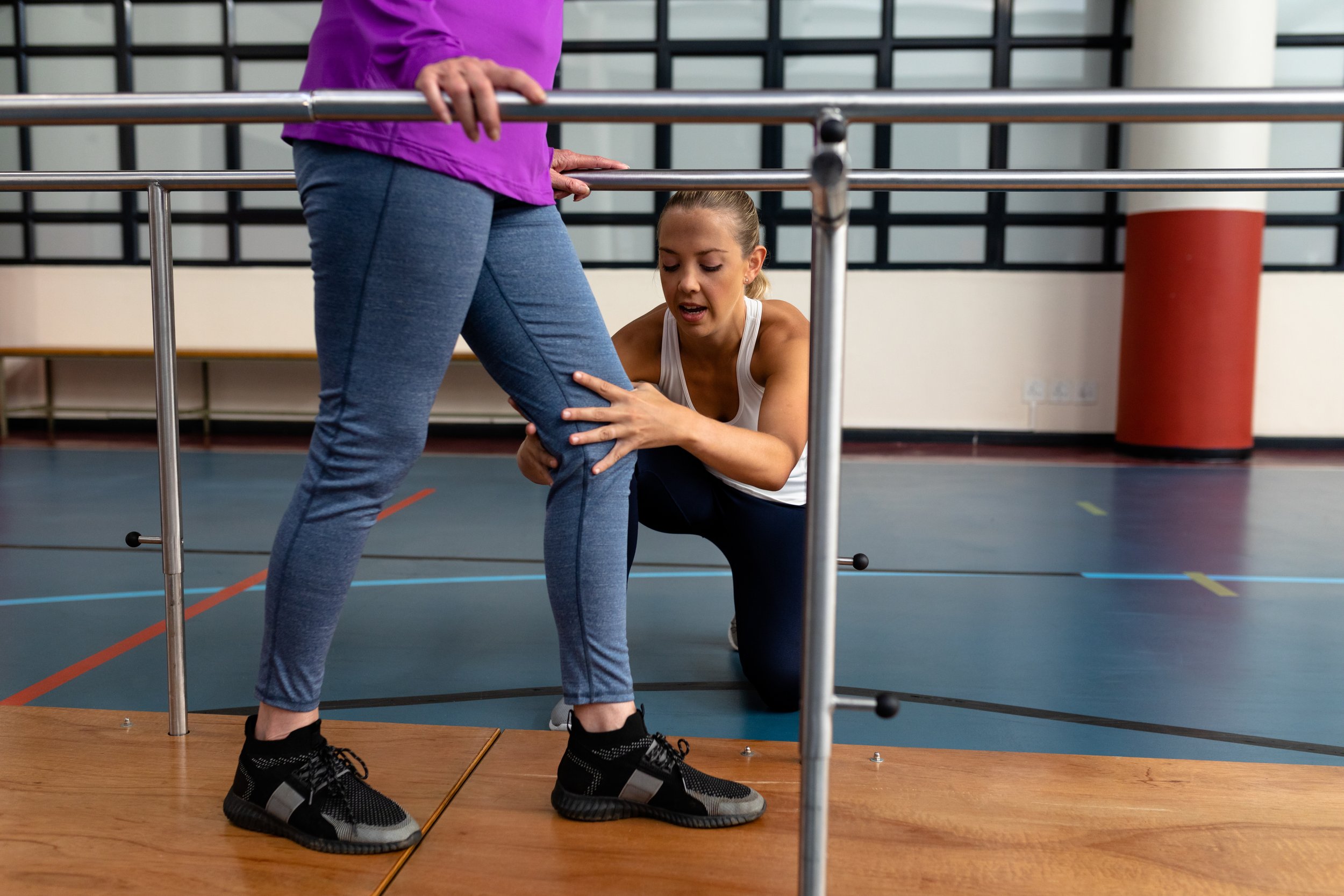Don’t Let Your Progress Stall: Transition From Physical Therapy To Adaptive Fitness
Completing physical therapy is a major milestone. You’ve put in the effort to regain mobility and strength after an injury, surgery, or chronic condition. However, many people don’t realize that finishing PT doesn’t mark the end of the journey—it’s actually just the beginning of a new chapter. Continuing with a personalized fitness plan is essential to maintain the progress you’ve worked so hard to achieve.
Recovery Extends Beyond The End Of Physical Therapy
As we develop adaptive fitness, we recognize that while we are not a physical therapy organization, we understand the distinct role and impact of physical therapy. It is essential for recovery, helping to restore movement, properly engage weakened muscles, and correct imbalances. However, the body responds significantly to both activity and inactivity. Discontinuing the movements learned in physical therapy can result in a gradual loss of the range of motion and strength gained, potentially leading to a dormant state.
Without ongoing conditioning:
Muscles can atrophy (weaken and shrink) in just a few weeks.
Joint stiffness can return, especially in areas prone to overuse.
Your brain-body connection can start to fade without repetition.
As we offer our programs for individuals with disabilities transitioning from physical therapy, we focus on the “why’s” behind each exercise. Transitioning from rehabilitation to a regular fitness routine offers your body the consistency it needs to remain strong and functional, supporting your activities of daily living (ADLs).
For our adaptive athletes, adaptive fitness is especially recommended to maintain momentum with exercises tailored to meet and surpass post-therapy goals. This approach fosters sustainable functional movements and endurance, ultimately enhancing quality of life.
How REIZ Approaches The Post-Physical Therapy
Have you ever heard of proprioception? It’s your body’s automatic ability to sense its own movement and positions!
How Fitness Reinforces Your Range Of Motion
One of the first things you notice in physical therapy is an increase in range of motion, also known as ROM. ROM is how far a joint can move comfortably in a specific direction. After injury or inactivity, ROM can diminish. If not maintained, it can significantly impact everyday life.
We take simple movements for granted. That might include walking upstairs, getting in and out of the car, or reaching for something on a shelf. Losing the ability to do these things can be incredibly frustrating and limiting—something you are likely all too familiar with, considering what you’ve had to adjust to in PT.
But to keep your joints healthy and functional, they need regular, intentional movement. That’s why our patients who join adaptive fitness programs can expect to experience dynamic stretches, strength training, and balance exercises to reinforce proper movement patterns. Maintaining and gradually increasing your ROM also helps reduce pain flare-ups, making it easier to stay active and independent in the years to come.
The Role Of Balanced Conditioning In Protecting Your Tissues
After physical therapy, your muscles are primed for conditioning. This is your window of opportunity to develop muscle consistency.
It’s not about lifting heavy weights or training like an elite athlete. It’s about regularly engaging your muscles to preserve the endurance you gained during PT. If you return to everyday life without using your muscles consistently, you risk destabilizing your joints and increasing your chances of re-injury.
When recovering from an injury, it’s important to understand how much stress your healing tissue can handle. According to Mueller and Maluf’s Physical Stress Theory, tissues adapt to the stress placed on them. Too little stress leads to atrophy, while too much can cause permanent damage. Maintaining the proper balance of applied stress is critical for long-term recovery.
Keeping track of how much activity you’re doing each week—and how that compares to what you’ve done in the past—can help prevent overload. Note, though, that different tissues respond best to different types of load. Based on your specific needs, your trainer will guide you on how to continue progressing in the right direction.
Key Benefits Of Training With A Professional After Physical Therapy
Working with a trainer who specializes in adaptive fitness means your workouts will be tailored to your unique post-therapy situation. Here’s what you can expect from your program:
Education on body mechanics so you understand how to move safely, both during workouts and in daily activities.
Tailored strength exercises that respect your current limitations while challenging your muscles in a meaningful way.
Joint-safe cardio options to help build resilience without overdoing it on the stress.
Functional movement training that focuses on improving real-life mobility.
Progression plans that ensure you’re getting stronger without putting your body at risk.
Make Safe, Effective Progress Alongside REIZ Adaptive Fitness
Physical therapy is a launchpad. You have already proven your ability to adapt, and continuing your journey with REIZ ensures you don’t plateau. Instead, you’ll improve your quality of life in ways that go beyond the clinic. You’ve come this far—now let’s take the next step together!
REMEMBER: We are a fitness resource, not medical professionals. You should consult your doctor and physical therapist before beginning a program with REIZ Adaptive Fitness.

